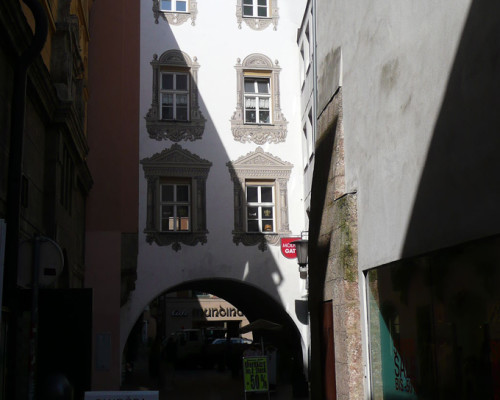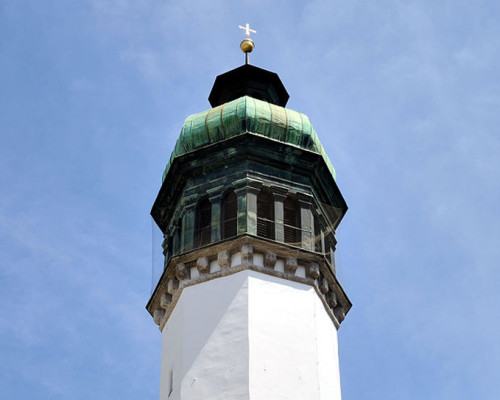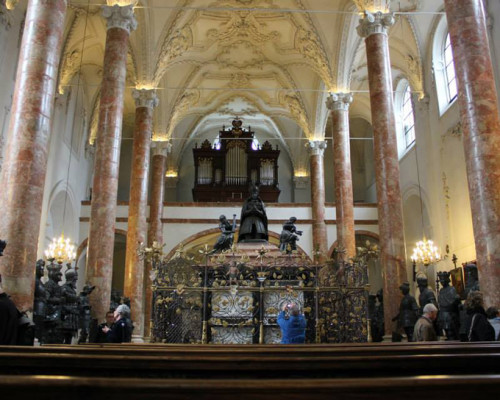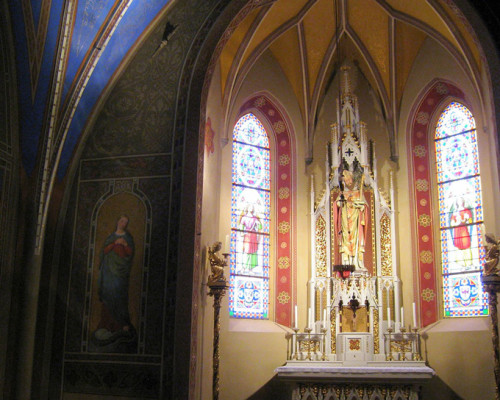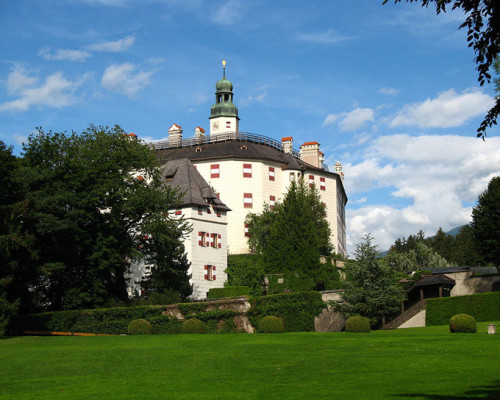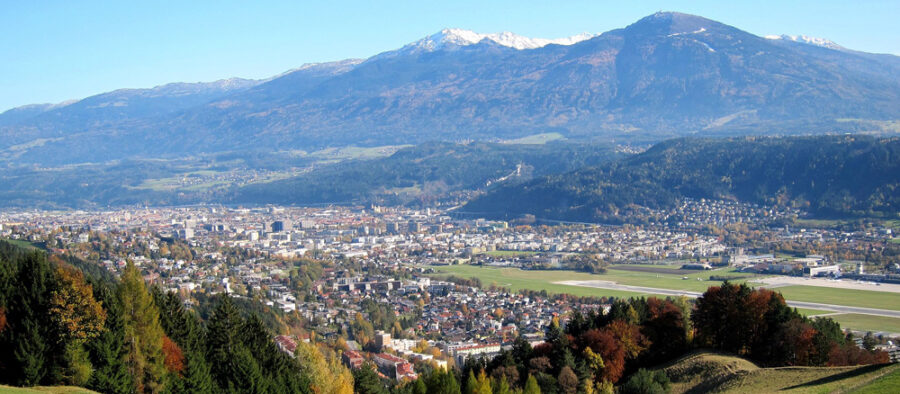
21 Dec Innsbruck
Innsbruck is the capital of the federal state of Tyrol in western Austria. It is located in the Inn river Valley. The city houses appr. 125,000 residents. Innsbruck is a well-known alpine wintersport resort, having hosted two winter olympics in 1964 and 1976.
Innsbruck became the capital of Tyrol in 1429 and the city became a centre of European politics and culture as Emperor Maximilian I moved the imperial court to Innsbruck in the 1490s. The still active university was founded in 1669.
What to do and see in Innsbruck
Old Town
This semi-circular historical quarter in the core of Innsbruck is full of old Tyrolian architecture with the Baroque, Renaissance and Rococo buildings.
There are several highlights in these idyllic quarters. The Baroque Helblinghaus is embellished with a beautiful stucco façade with cherubs and other ornaments. The Golden Eagle (Goldener Adler) is a famous 16th century inn, visited by many of the former empires rulers as well as the world renown writer Goethe. Another notable landmark in the area, the 57 meters high Stadtturm, is a 14th century watchtower that together with the adjoining Old Rathaus gives a great view over the beautiful Old Town. Other notable landmarks in the area include the Ottoburg, a residential tower built in 1494; the Deutschordenshaus (House of the Teutonic Order) built in 1532; and the Burgriesenhaus (Castle Giant’s House), built in 1490 for a court giant.
Hofkirche
This Gothic church in the Old Town is an important landmark. The church was built in 1553 by Emperor Ferdinand I, as a memorial to his grandfather Emperor Maximilian I, whose cenotaph within boasts a remarkable collection of German Renaissance sculptures. The interior contains galleries, a lectern and high slender colonnettes of red marble with beautiful Corinthian capitals. The cenotaph is surrounded by 28 large bronze statues , sculpted between 1502-1555 depicting ancestors, relatives and heroes.
Schloss Ambras
This glorious Renaissance castle was built at an elevation of 587 meters, far above the city. The structure was built in the 16th century on the spot of an earlier 10th century castle, which became the seat of power for the Counts of Andechs. It also served as a residence of Archduke Ferdinand II from 1563 to 1595. A notable detail is the Spanish Hall, with its 27 full-length portraits of the rulers of Tyrol. Another point of interest is the “Rüstkammer”, an armoury housing very rare examples of armour from the 15th century that originally came from the collections of Emperor Maximilian I and the Archduke Sigismund.
Recreation
- Weekender (Tschamlerstraße 3) – this café and club offers almost weekly indie live bands.
- Treibhaus (Angerzellgasse 8) – A vivid bistro with almost daily events (comedy shows, concerts and dances). There is a free concert every Friday. The area also has a garden, a jazz salon and two big event halls.
- Kinderwelt in Kaufhaus Tyrol offers activities for children.
- Patscherkofel is a decent ski resort for wintersport acitivities.
- The Alpenzoo (Weiherburggasse 37) is Europe’s highest situated zoo specializing in alpine animals. The area has terrariums, aviaries and aquariums (as well as the world’s biggest collection of alpine fish species).
Shopping
- The Kaufhaus Tyrol mall (Maria-Theresien-Straße 31) offers, all kinds of wares on its five floors and is a splendid place for buying reasonable-priced souvenirs.
- The Franziskanerplatz, the Sparkassenplatz, the Anichstraße and the Museumstraße are popular shopping areas with many cozy stores.
Photos: With the CC licence / Nicor, MarkusMark, Joanbanjo, Leandro Neumann Ciuffo, Didier Descouens
| Innsbruck, Austria | 5°C few clouds | |
Wind
1 m/s, W
Humidity
73%
Pressure
752.31 mmHg | ||
Top 5 in Innsbruck
- Old Town
- Shopping at Franziskanerplatz
- Skiing at Patscherkofel
- Hofkirche
- Helblinghaus
How to get to Innsbruck
How to get around in Innsbruck
- The local public transport consists of 4 tram lines and a bus network operated mainly by the Innsbrucker Verkehrsbetriebe. The special bus line The Sightseer connects the major sights like the Schloss Ambras, the Bergisel and the Alpenzoo to downtown. The journey planner and ticket prices of the IV are visible here.
- A suburban train system called S-Bahn with five routes (S1 – S5) connects Innsbruck to villages and towns around the city. Timetables and fares can be found here.

